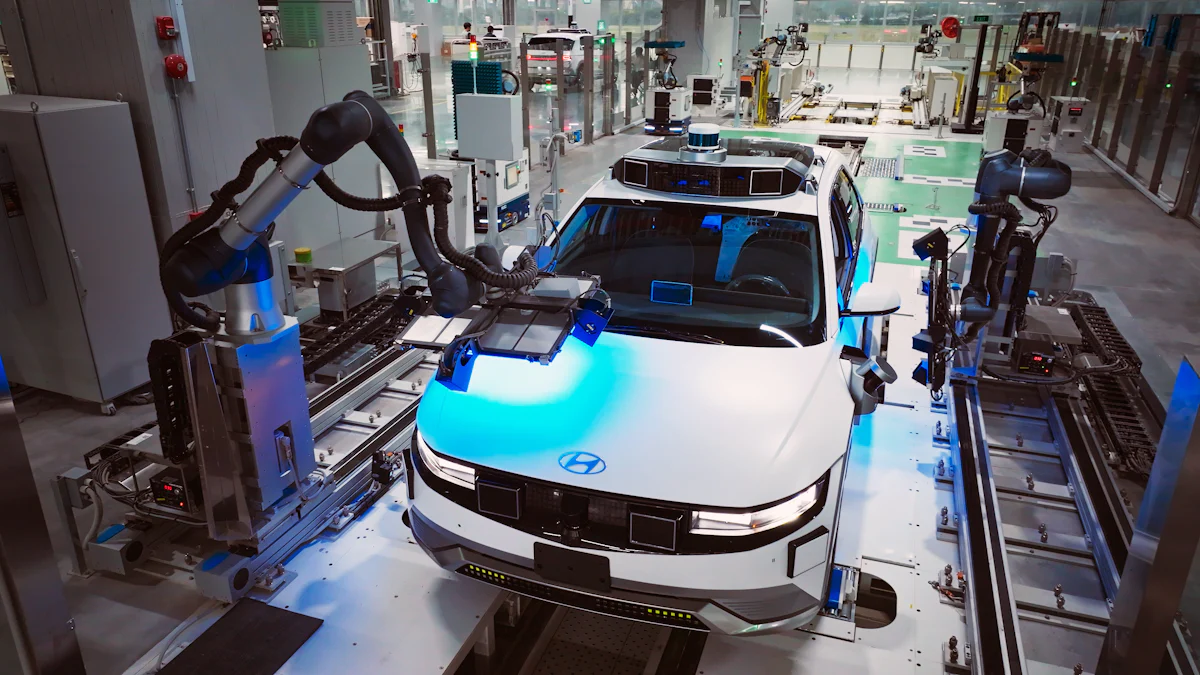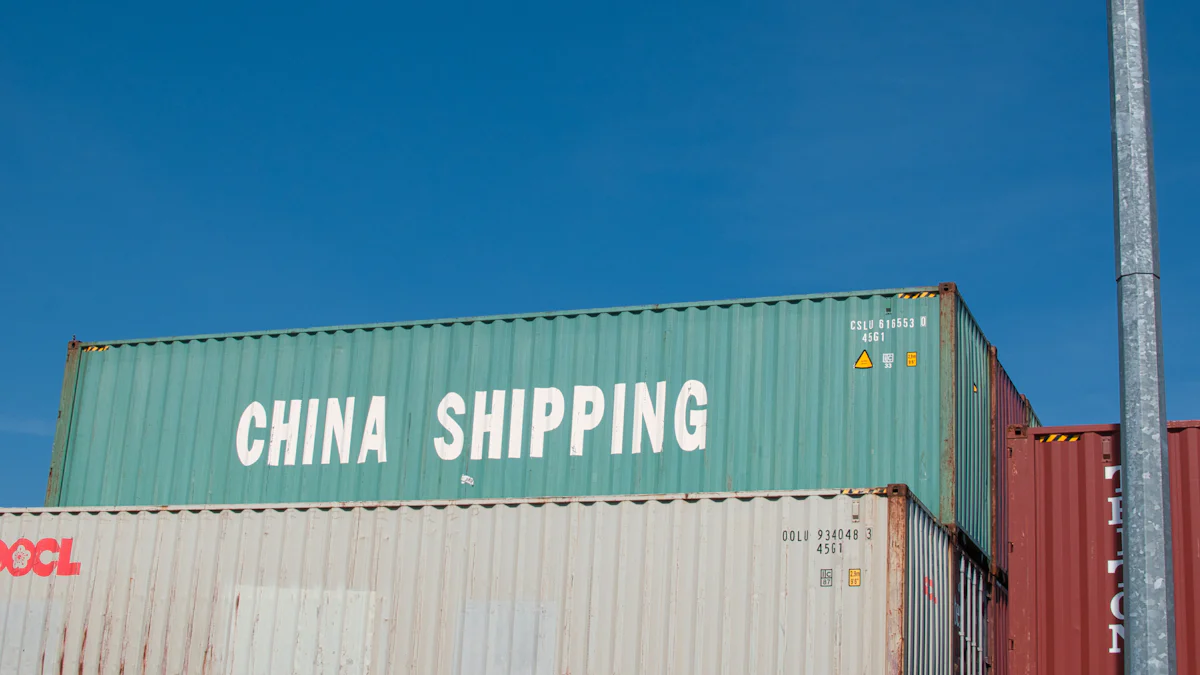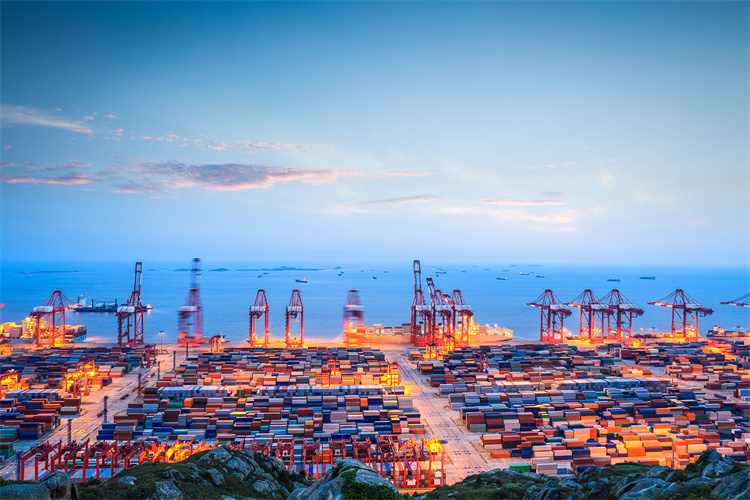Trends to Watch: The Next Wave of Innovations in US and China's Manufacturing Supply Chains

Supply chain management plays a crucial role in manufacturing. Efficient supply chains ensure timely production and delivery of goods. The focus on Chinese and American manufacturing sectors highlights their global significance. Understanding future trends in supply chain management is vital. Emerging Trends shape the strategies and operations of manufacturers. These trends influence economic growth, trade policies, and sustainability. The Covid-19 pandemic has shown the importance of resilient supply chains. Companies must adapt to new challenges and opportunities.
Emerging Trends in Supply Chain Management

Technological Advancements
Automation and Robotics
Automation and robotics revolutionize manufacturing processes. Automated systems increase production speed and accuracy. Robots handle repetitive tasks, reducing human error. Factories achieve higher efficiency with robotic assistance. Automation minimizes labor costs and enhances productivity. Manufacturers invest in advanced robotics to stay competitive.
Artificial Intelligence and Machine Learning
Artificial intelligence (AI) and machine learning (ML) transform supply chain management. AI provides predictive recommendations and optimizes supply chain networks. Machine learning algorithms improve demand forecasting accuracy. AI identifies manufacturing issues and optimizes labor scheduling. Real-time data from AI enhances operational efficiency. AI and ML reduce excess inventory and energy waste.
Internet of Things (IoT)
The Internet of Things (IoT) offers real-time visibility into supply chains. IoT devices track goods throughout the supply chain. Sensors monitor environmental conditions during transportation. IoT improves delivery times and customer service. Real-time data from IoT devices enhances supply chain performance. IoT integration helps identify bottlenecks and optimize logistics.
Strategic Shifts
Reshoring and Nearshoring
Reshoring and nearshoring gain popularity among manufacturers. Companies move production closer to home markets. Reshoring reduces dependency on distant suppliers. Nearshoring shortens supply chains and improves responsiveness. These strategies enhance supply chain resilience. Local production supports regional economies and reduces transportation costs.
Sustainable Supply Chain Practices
Sustainable practices become crucial in supply chain management. Companies adopt eco-friendly materials and processes. Reducing carbon footprints becomes a priority. Sustainable supply chains attract environmentally conscious consumers. Green logistics minimize environmental impact. Manufacturers implement recycling and waste reduction programs.
Risk Management and Resilience
Risk management ensures supply chain resilience. Companies develop strategies to mitigate disruptions. Diversifying suppliers reduces dependency on single sources. Risk assessments identify potential vulnerabilities. Contingency plans prepare for unexpected events. Building resilient supply chains ensures business continuity. Manufacturers invest in technologies to enhance supply chain visibility.
Comparative Analysis of Chinese and American Supply Chains

Strengths and Weaknesses
Technological Capabilities
China excels in technological innovation. The country invests heavily in automation, robotics, and artificial intelligence. These investments drive efficiency and productivity in manufacturing. The Belt and Road Initiative enhances China's global supply chain network. This initiative creates alternative supply chains and reduces dependency on traditional routes.
The United States focuses on advanced technologies. Companies invest in automation and machine learning. These technologies improve supply chain management. The U.S. also emphasizes cybersecurity to protect supply chain data. Friendshoring and nearshoring strategies reduce reliance on distant suppliers. These strategies enhance supply chain resilience.
Workforce and Labor Market
China has a large, skilled labor force. Manufacturing sectors benefit from this workforce. Labor costs in China remain relatively low. This cost advantage attracts global manufacturers. The government supports vocational training programs. These programs ensure a steady supply of skilled workers.
The United States faces labor market challenges. High labor costs impact manufacturing competitiveness. The aging workforce poses additional challenges. Companies invest in automation to offset labor shortages. Training programs focus on upskilling workers. These programs aim to meet the demands of modern manufacturing.
Government Policies and Regulations
Impact on Supply Chain Strategies
Chinese government policies support manufacturing growth. Subsidies and incentives attract foreign investments. The government promotes technological advancements. Policies encourage the adoption of green technologies. Environmental regulations ensure sustainable practices. These policies shape supply chain strategies.
U.S. government policies emphasize trade regulations. Tariffs and trade agreements impact supply chain decisions. Policies promote reshoring and nearshoring. These strategies reduce dependency on foreign suppliers. Environmental regulations encourage sustainable practices. Companies adapt supply chain strategies to comply with these regulations.
Future Policy Directions
China's future policies will likely focus on innovation. The government aims to lead in emerging technologies. Investments in AI and IoT will continue. Policies will support sustainable supply chain practices. The Belt and Road Initiative will expand further. This expansion will strengthen China's global supply chain presence.
The United States will focus on supply chain resilience. Policies will promote friendshoring and nearshoring. Investments in advanced technologies will increase. Cybersecurity will remain a priority. Environmental policies will encourage green supply chains. These directions will shape future supply chain strategies.
Market Dynamics and Consumer Behavior
Demand Patterns in China vs. the U.S.
Chinese consumers demand innovative products. The market favors high-tech gadgets and electronics. Rapid urbanization drives demand for consumer goods. E-commerce platforms dominate the retail landscape. These platforms influence supply chain logistics.
American consumers prioritize quality and sustainability. The market favors eco-friendly products. Demand for locally produced goods is rising. E-commerce growth influences supply chain strategies. Companies focus on fast delivery and customer satisfaction.
Adaptation Strategies for Manufacturers
Manufacturers in China adopt advanced technologies. Automation and AI enhance production efficiency. Companies invest in sustainable practices. These practices attract environmentally conscious consumers. E-commerce integration optimizes supply chain logistics.
U.S. manufacturers focus on innovation and quality. Investments in automation offset high labor costs. Sustainable practices meet consumer demands. Companies adopt friendshoring and nearshoring strategies. These strategies enhance supply chain resilience. E-commerce integration improves delivery speed and customer service.
JUSDA's Role in Future Supply Chain Trends
Leveraging Advanced Technologies
Big Data and IoT Integration
JUSDA integrates big data and the Internet of Things (IoT) to enhance supply chain management. The JusLink platform uses IoT devices to collect real-time data from various points in the supply chain. This data includes information on inventory levels, transportation conditions, and production status. By analyzing this data, JUSDA can identify inefficiencies and optimize operations. The integration of big data allows for predictive analytics, which helps forecast demand and manage resources more effectively. This approach ensures a seamless flow of goods from raw materials to end consumers.
Cloud Platforms for Real-time Collaboration
JUSDA employs cloud platforms to facilitate real-time collaboration among supply chain participants. The JusLink platform connects suppliers, manufacturers, and customers through a unified interface. This connectivity allows for instant communication and data sharing. Cloud-based solutions enable stakeholders to access critical information anytime and anywhere. This transparency improves decision-making and reduces delays. JUSDA's cloud platforms support dynamic adjustments in response to market changes. This agility enhances the overall efficiency and resilience of the supply chain.
Global Presence and Infrastructure
Service Points and Warehousing Capabilities
JUSDA boasts a robust global infrastructure with 155 service points worldwide. These service points ensure efficient logistics and distribution. JUSDA operates over 2.5 million square meters of warehousing space. This extensive warehousing capacity supports large-scale storage and inventory management. The strategic location of service points and warehouses minimizes transportation time and costs. JUSDA's infrastructure enables quick response to customer demands and market fluctuations. This capability strengthens the company's position as a reliable supply chain partner.
International Service Routes
JUSDA manages more than 2,000 international service routes. These routes connect key markets across the globe. The extensive network facilitates smooth cross-border logistics. JUSDA's international routes ensure timely delivery of goods to various destinations. The company leverages multimodal transportation options, including air, sea, and land. This flexibility allows JUSDA to choose the most efficient and cost-effective transportation methods. The comprehensive service routes enhance global trade and support international business operations.
Recognitions and Certifications
Industry Awards and Listings
JUSDA has received numerous industry awards and recognitions. The company has been listed on the Chinese logistics service industry unicorn enterprise list and the Hurun Global Unicorn List from 2019 to 2024. In 2023, JUSDA earned the "Dingge Award Annual Industrial Platform Enterprise" by the Harvard Business Review (Chinese version). These accolades highlight JUSDA's excellence in supply chain management. The recognition underscores the company's commitment to innovation and quality service.
Compliance and Certifications
JUSDA holds several important certifications that validate its operational standards. The company has national AAAAA comprehensive logistics enterprise certification and AEO enterprise senior certification. JUSDA also complies with ISO9001 standards. Membership in the World Freight Alliance further demonstrates JUSDA's adherence to global logistics standards. These certifications ensure that JUSDA meets regulatory requirements and maintains high-quality service. Compliance with these standards enhances customer trust and confidence in JUSDA's capabilities.

JUSDA Solutions
To provide you with professional solutions and quotations.
Emerging trends in supply chain management, such as automation, AI, and IoT, significantly impact manufacturing efficiency and resilience. Companies must prioritize staying ahead of these trends to maintain competitiveness. The integration of advanced technologies enhances visibility and operational efficiency. Industry stakeholders should innovate and adapt to evolving market dynamics. Emphasizing sustainability and risk management will ensure long-term success. JUSDA's commitment to leveraging cutting-edge solutions positions it as a leader in the industry. Adopting these practices will drive future growth and stability in supply chain management.
See Also
Tomorrow's Logistics Revolution: AI Transforming Supply Chains
High-Tech Manufacturing: Solutions for Streamlined Supply Chain Challenges
Career Growth Path: Future Supply Chain Opportunities
Sustainable Exploration: Robotics Trends in Supply Chain Efficiency
5 Impactful Trends: Enhancing Future Supply Chain Efficiency
